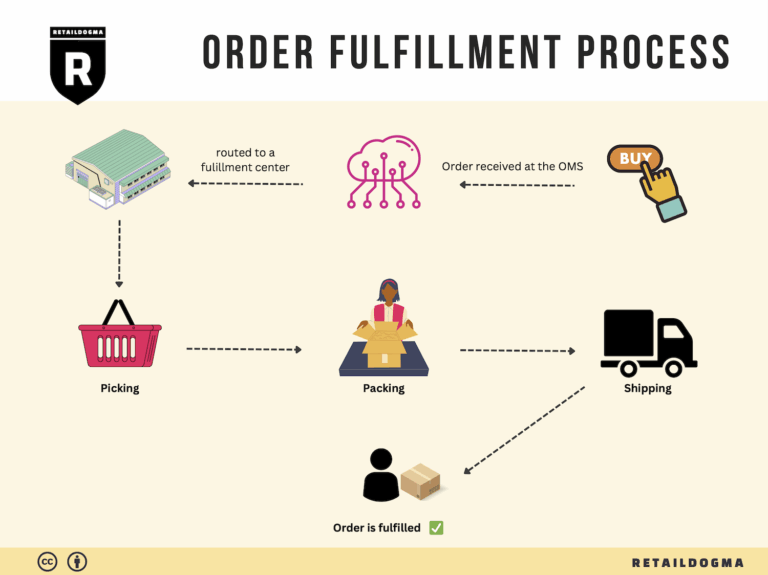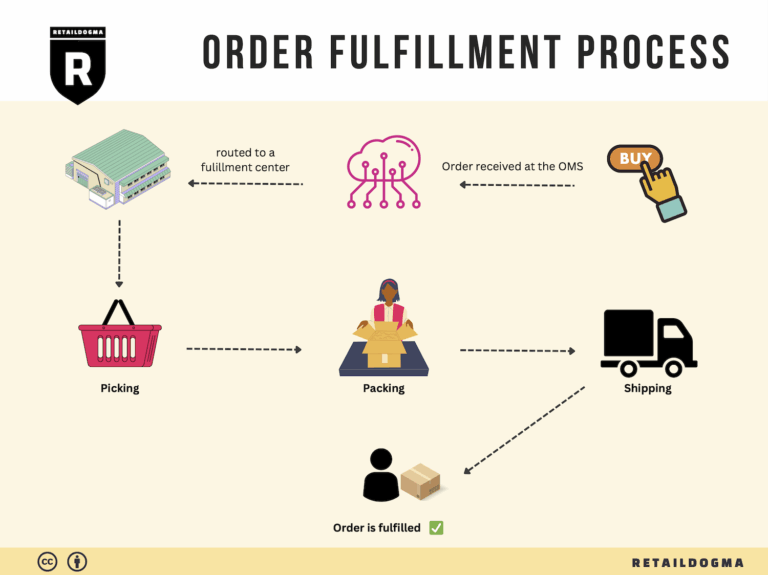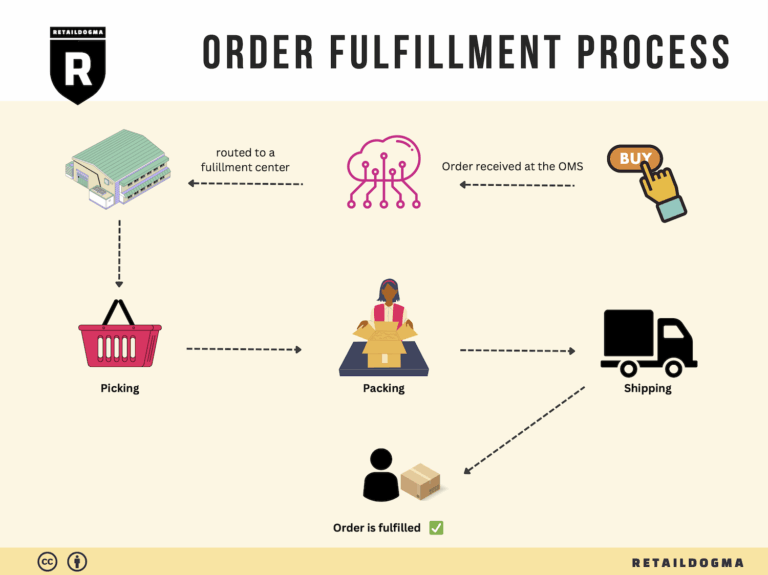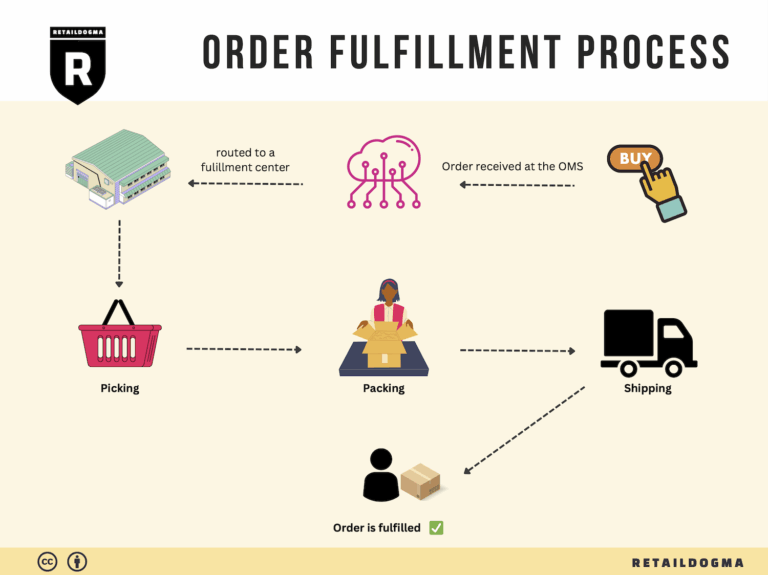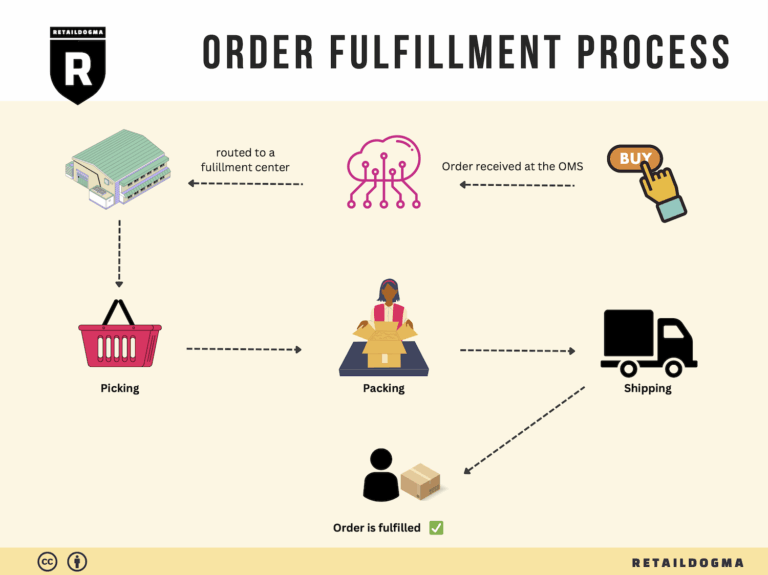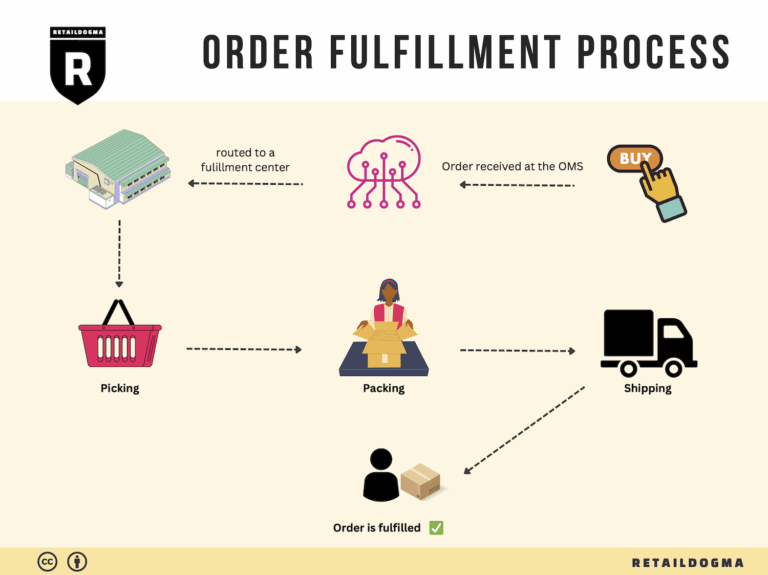How Order Fulfillment Works: A Step-by-Step Guide for Businesses
What is E-commerce Fulfillment? An Introduction for Growing Businesses
Understanding E-commerce Fulfillment: A Pathway to Growth
As your online business begins to flourish, the excitement of increased sales can quickly turn into the overwhelm of managing orders, packing, and shipping. Many entrepreneurs find themselves drowning in the logistics of getting products to their customers. This is where e-commerce fulfillment comes into play—a critical component of your operational strategy. Simply put, fulfillment is the process of getting a product from your warehouse to your customer’s doorstep. It encompasses everything from inventory management to order processing, packaging, and shipping.
In this guide, we will explore the various fulfillment models available to growing businesses, including Third-Party Logistics (3PL) and Fulfillment by Amazon (FBA). Each model has its unique advantages and challenges, allowing you to choose one that aligns with your business goals and customer expectations.
We will also delve into the core services associated with e-commerce fulfillment. These include inventory storage, order processing, packing, shipping, and returns management. Understanding these services will help you identify what your business needs and how to streamline these processes for efficiency.
Choosing the right fulfillment partner can be a daunting task. Factors such as reliability, technology integration, geographic reach, and customer service should all be considered. We will provide practical insights on how to evaluate potential partners to ensure they meet your specific requirements.
Pricing is another critical aspect we will cover. Understanding the costs involved in different fulfillment methods can help you make informed decisions that keep your margins healthy. We will break down common pricing models and what to expect in terms of fees, including storage costs, shipping rates, and additional service charges.
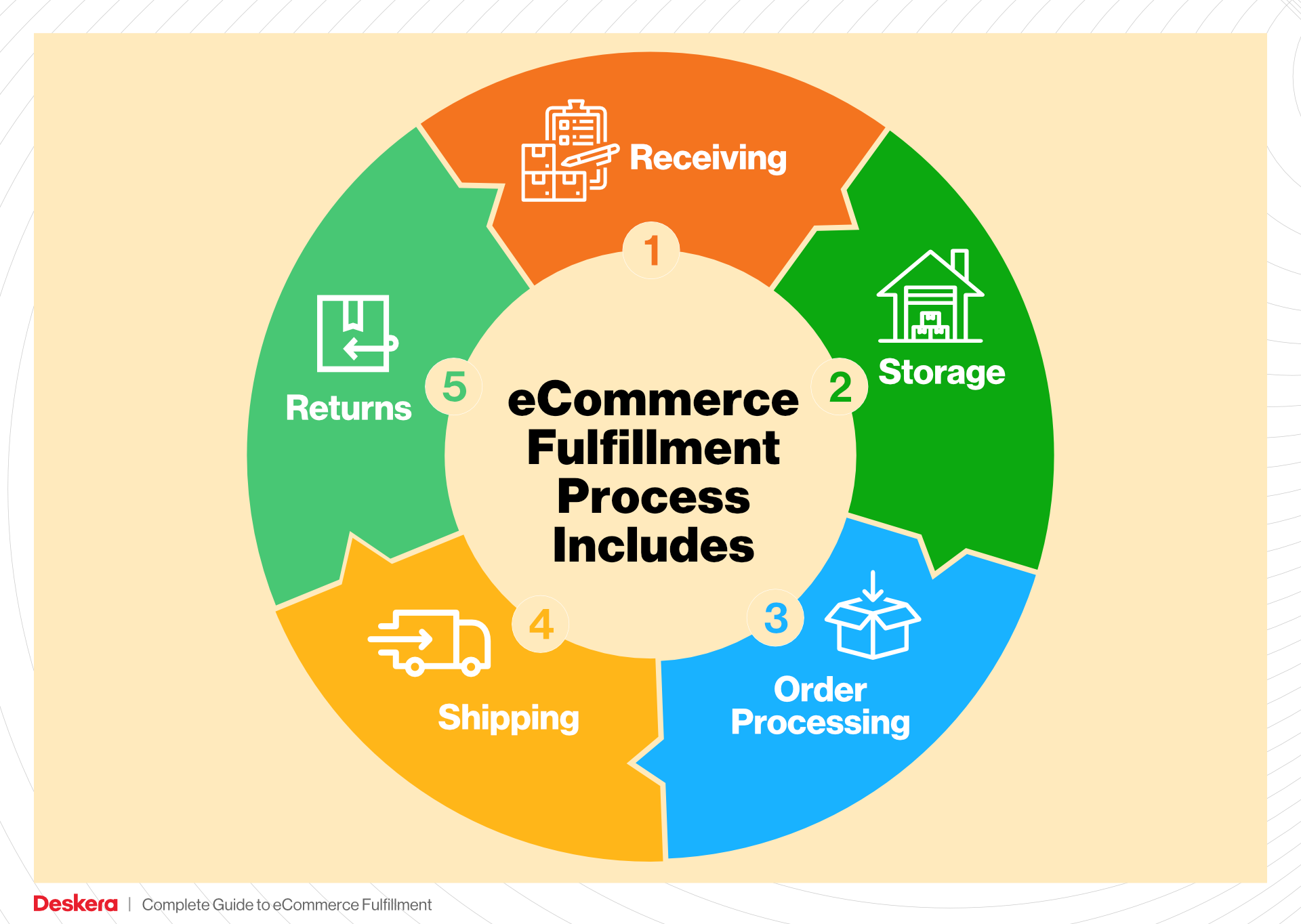
The ultimate goal of this guide is to empower you with the knowledge to make smart decisions about your logistics. By understanding e-commerce fulfillment and its various components, you can enhance your customer experience, improve operational efficiency, and scale your business effectively. Whether you are just starting out or looking to optimize your existing processes, this guide will serve as a valuable resource in navigating the complexities of e-commerce fulfillment.
What You’ll Learn In This Guide
- What is E-commerce Fulfillment? An Introduction for Growing Businesses
- The Order Fulfillment Process: From ‘Buy’ Button to Customer’s Door
- Comparing Fulfillment Models: In-House vs. 3PL vs. Dropshipping
- A Deep Dive into Amazon FBA: Pros, Cons, and Who It’s For
- Core Services Offered by Fulfillment Centers
- How to Choose a Fulfillment Partner: A 6-Point Checklist
- Understanding Fulfillment Pricing: A Breakdown of Common Fees
- Frequently Asked Questions (FAQs) about Fulfillment
- Conclusion: Is Outsourcing Fulfillment the Right Move for Your Business?
- Important Disclaimer
The Order Fulfillment Process: From ‘Buy’ Button to Customer’s Door
1. Receiving Inventory
The first step in the order fulfillment process is receiving inventory. This involves the delivery of products from suppliers to your warehouse or fulfillment center. Upon arrival, items are checked against purchase orders to confirm that the correct quantities and items have been received. This step is critical for maintaining accurate inventory levels and ensuring that you have what you need to fulfill customer orders promptly.
Key Term: SKU (Stock Keeping Unit)
Every product should have a unique SKU, which facilitates tracking and management within your inventory system. By effectively utilizing SKUs, businesses can streamline the receiving process, reduce errors, and maintain an organized inventory.
2. Warehouse Storage
Once inventory is received and verified, it is stored in the warehouse. Efficient storage is essential for optimizing space and ensuring quick access to products when orders are placed. Items should be organized logically, often by category or frequency of sale, to enhance picking efficiency later in the process.
This stage is crucial because poorly organized storage can lead to delays in order fulfillment, increased labor costs, and potential stockouts. Implementing a systematic approach, such as a Warehouse Management System (WMS), can help monitor inventory levels, track product locations, and automate reordering processes.
Key Term: FIFO (First In, First Out)
Adopting a FIFO inventory method ensures that older stock is sold before newer stock, which is particularly important for perishable items or products with expiration dates.
3. Order Picking
The order picking process begins when a customer places an order. Warehouse staff receive a pick list, which details the items and quantities required for each order. Efficient picking is vital to ensure that orders are fulfilled accurately and quickly, as delays at this stage can lead to customer dissatisfaction.
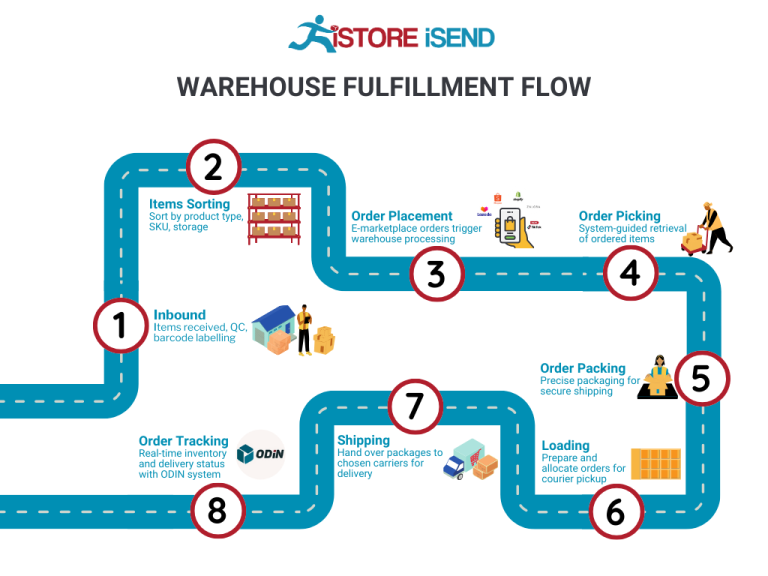
Businesses can optimize their picking process by employing various strategies, such as batch picking (picking multiple orders at once) or zone picking (assigning specific areas of the warehouse to different pickers). These strategies can significantly reduce the time spent walking through the warehouse and enhance overall productivity.
Key Term: Pick Lists
A pick list is a document that outlines the items to be picked for customer orders. It plays a crucial role in guiding warehouse staff to ensure accuracy and efficiency during the picking process.
4. Order Packing
After items are picked, they move to the packing stage. Proper packing is essential to protect products during transit and ensure they arrive in good condition. This step involves selecting appropriate packing materials, such as boxes, bubble wrap, and packing peanuts, to secure items based on their fragility and size.
Moreover, packing serves as an opportunity to enhance the customer experience. Including personalized notes or promotional materials can leave a lasting impression on customers. Efficient packing processes can also minimize shipping costs by optimizing package dimensions and weight.
Key Term: Packing Slip
A packing slip is a document included in the package that lists the items contained within. It serves as a confirmation for customers and can assist in returns or exchanges.
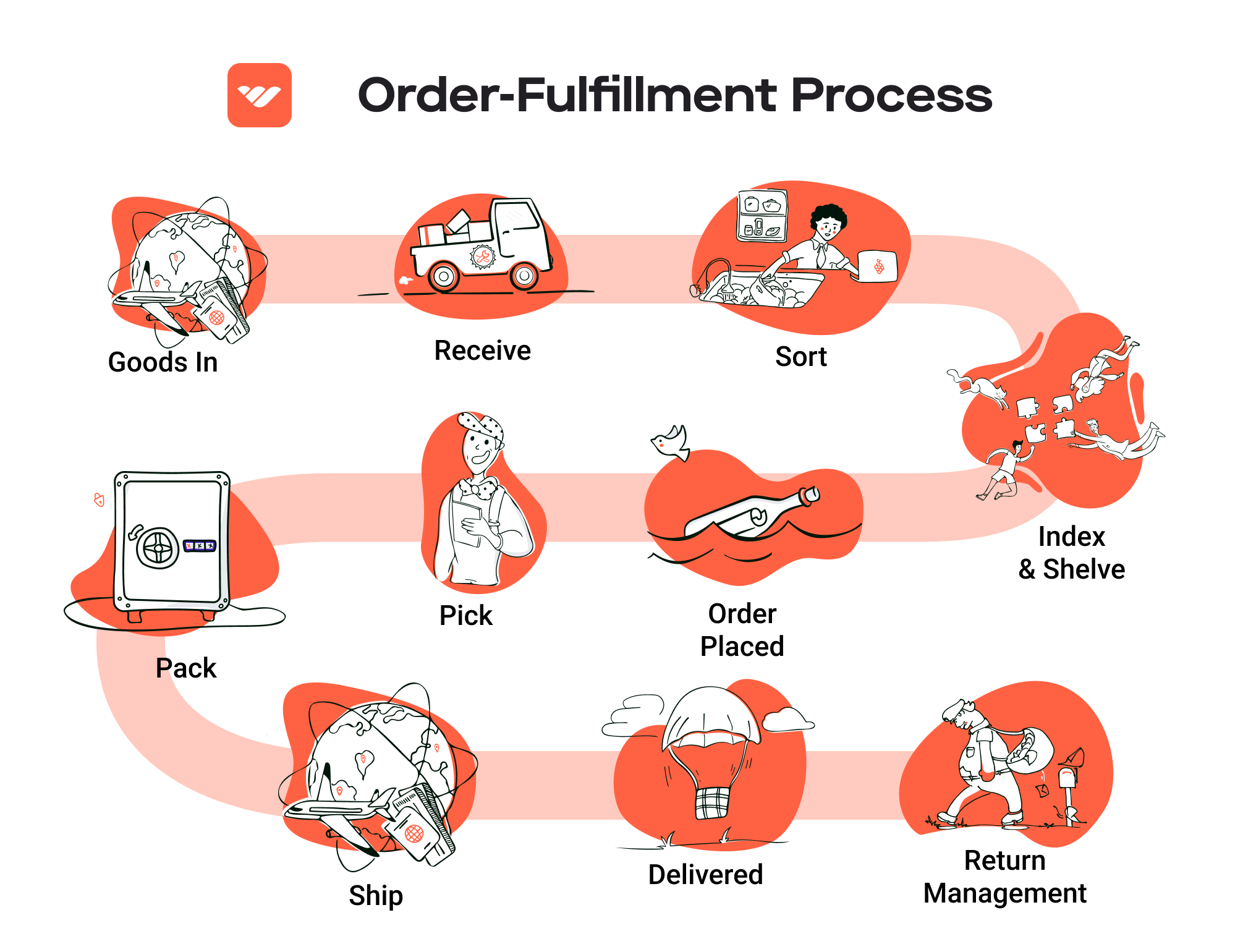
5. Shipping & Delivery
The final step in the fulfillment process is shipping and delivery. Once packages are packed and labeled, they are handed over to shipping carriers for delivery to the customer’s address. This step is critical as it directly affects customer satisfaction; timely delivery can significantly enhance the overall shopping experience.
Businesses should offer multiple shipping options to cater to different customer needs, such as standard, expedited, and same-day delivery. Implementing a robust tracking system allows customers to monitor their orders in real-time, which can further enhance satisfaction and transparency.
Key Term: Last Mile Delivery
Last mile delivery refers to the final step of the shipping process, where the package is delivered to the customer’s doorstep. This phase is often the most complex and costly, making it essential for businesses to optimize their logistics strategies for efficiency.
By understanding and optimizing each step of the order fulfillment process, e-commerce businesses can improve efficiency, reduce costs, and ultimately enhance customer satisfaction.
Comparing Fulfillment Models: In-House vs. 3PL vs. Dropshipping
Fulfillment Model Comparison
| Model | Who Handles Inventory | Best For (Business Stage) | Key Advantage | Key Disadvantage |
|---|---|---|---|---|
| In-House Fulfillment | The business itself | Established businesses | Full control over inventory and processes | High upfront investment in space and labor |
| Third-Party Logistics (3PL) | A third-party provider | Scaling businesses | Cost-effective scalability and expertise | Less control over inventory and fulfillment speed |
| Dropshipping | Suppliers | Startups and small businesses | Low capital requirement, no inventory risk | Lower margins and potential for stock issues |
In-House Fulfillment
In-house fulfillment is a model where a business manages its own inventory and shipping processes. This approach is typically adopted by established companies that have the resources and infrastructure to support it. One of the significant advantages of in-house fulfillment is the level of control it offers. Businesses can manage their inventory closely, maintain quality standards, and streamline their shipping processes to meet customer expectations. However, the downsides include high upfront costs associated with warehousing, staffing, and technology. In-house fulfillment also requires substantial ongoing operational management, which can divert attention from core business activities such as marketing and product development. This model may be ideal for businesses with consistent sales volume and those that require a high degree of customization in their fulfillment processes.
Third-Party Logistics (3PL)
Third-party logistics (3PL) involves outsourcing the logistics and fulfillment processes to specialized companies. This model is well-suited for businesses that are looking to scale but may not have the capacity or expertise to manage logistics efficiently. 3PL providers offer a range of services, including warehousing, inventory management, and shipping, allowing businesses to focus on their core competencies. The key advantage of using 3PL is cost-effective scalability; businesses can expand their operations without significant investment in infrastructure. However, partnering with a 3PL can lead to a loss of control over inventory and fulfillment speed. Businesses must carefully choose a reputable provider to mitigate risks associated with service quality and reliability. This model is ideal for businesses experiencing growth or those entering new markets, as it allows for flexibility and faster response times.
Dropshipping
Dropshipping is a fulfillment model where the retailer does not hold inventory but instead relies on suppliers to ship products directly to customers. This model is particularly attractive for startups and small businesses due to its low capital requirement and minimal risk regarding inventory management. Retailers can offer a wide range of products without the overhead costs associated with warehousing and fulfillment. However, dropshipping comes with its own set of challenges. Margins tend to be lower because the retailer pays the supplier a wholesale price, which can cut into profitability. Additionally, issues such as stock availability and shipping delays may arise, as the retailer has little control over the supply chain. Despite these disadvantages, dropshipping can be an effective way for new businesses to enter the market with a diverse product offering while minimizing financial risk.
Conclusion
Choosing the right fulfillment model depends on various factors, including the business’s size, stage of growth, financial resources, and operational capabilities. In-house fulfillment offers control but requires significant investment and management. Third-party logistics provides scalability and expertise, making it suitable for growing businesses. Dropshipping allows for low-risk entry into the market but may result in lower margins and less control over the customer experience. Each model has its strengths and weaknesses, and understanding these can help e-commerce business owners make informed decisions that align with their operational goals and customer expectations.
A Deep Dive into Amazon FBA: Pros, Cons, and Who It’s For
Understanding Fulfillment by Amazon (FBA)
Fulfillment by Amazon (FBA) is a service provided by Amazon that allows e-commerce businesses to outsource their order fulfillment processes. With FBA, sellers send their products to Amazon’s fulfillment centers, where Amazon takes care of storage, packaging, shipping, and customer service. This service not only simplifies logistics for sellers but also enhances the shopping experience for customers, as they can benefit from Amazon’s efficient shipping processes and customer service.
How FBA Works
-
Setting Up an FBA Account: Sellers must first create an Amazon Seller account and enroll in the FBA program. This can be done through the Amazon Seller Central platform.
-
Product Preparation: Sellers prepare their products according to Amazon’s guidelines, which include labeling and packaging requirements. Proper preparation is crucial to avoid issues during the fulfillment process.
-
Shipping to Amazon: Once the products are prepared, sellers ship them to Amazon’s fulfillment centers. Amazon provides shipping plans and guidelines to ensure that products are sent to the appropriate locations.
-
Storage and Inventory Management: Once received at the fulfillment center, products are stored until sold. Amazon manages the inventory levels and provides sellers with tools to track inventory performance.
-
Order Fulfillment: When a customer places an order for a product listed with FBA, Amazon takes care of the entire fulfillment process. This includes picking the product from the warehouse, packing it, and shipping it directly to the customer.
-
Customer Service and Returns: Amazon handles customer inquiries and returns for FBA products. This allows sellers to focus on other aspects of their business while ensuring a high level of customer service.
Pros of Fulfillment by Amazon (FBA)
-
Prime Eligibility: Products fulfilled through FBA are eligible for Amazon Prime, giving sellers access to a vast customer base that values fast, free shipping. This can significantly increase sales volume and visibility.
-
Customer Trust: By utilizing Amazon’s trusted platform and customer service, sellers can enhance their credibility. Customers are more likely to purchase from FBA listings due to Amazon’s reputation for reliability.
-
Multi-Channel Fulfillment: FBA can be used to fulfill orders from other sales channels, not just Amazon. This means that sellers can manage their inventory through Amazon while selling on their own websites or other marketplaces.
-
Scalability: FBA allows sellers to scale their businesses without the need for significant investment in warehousing and logistics. As sales grow, sellers can easily send more inventory to Amazon.
-
Time-Saving: Outsourcing fulfillment to Amazon frees up time for sellers to focus on marketing, product development, and other critical areas of their business.
Cons of Fulfillment by Amazon (FBA)
-
High Fees: FBA comes with various fees, including storage fees for keeping products in Amazon’s warehouses and fulfillment fees for each order shipped. These costs can add up, particularly for sellers with low margins.
-
Strict Inventory Rules: Amazon has specific requirements for inventory management, including restrictions on the types of products that can be sold through FBA and guidelines on inventory limits. Sellers must stay compliant to avoid penalties.
-
Commingling Risks: FBA products may be commingled with inventory from other sellers, leading to potential issues such as receiving returns that do not belong to the seller. This can affect brand reputation and product quality.
-
Dependency on Amazon: Relying on FBA means that sellers are tied to Amazon’s policies and changes. Any alterations in fees, fulfillment processes, or terms of service can directly impact sellers’ operations.
-
Limited Control over Shipping: While Amazon handles shipping, sellers have less control over the delivery process and customer experience. Issues such as delays or damages can occur, and sellers must rely on Amazon’s customer service to resolve them.
Who is FBA Best For?
Fulfillment by Amazon is best suited for:
-
Established E-commerce Businesses: Businesses with a steady sales volume can benefit from FBA’s efficiency and scalability. They can leverage FBA to expand their reach without significantly increasing logistics costs.
-
Sellers of High-Demand Products: If a seller offers products that are in high demand, the benefits of FBA, such as Prime eligibility and fast shipping, can lead to increased sales.
-
Sellers Who Want to Scale Quickly: For entrepreneurs looking to grow their business rapidly, FBA provides the logistics framework to handle increased order volume without needing to invest in warehousing and fulfillment infrastructure.
-
New Sellers: New sellers who may not have the resources to manage fulfillment can benefit from FBA’s established logistics network, allowing them to focus on building their brand and marketing their products.
In conclusion, while Fulfillment by Amazon offers numerous advantages, particularly in terms of logistics and customer trust, it is essential for sellers to weigh these benefits against the potential drawbacks, including fees and dependency on Amazon’s platform. By understanding the dynamics of FBA, businesses can make informed decisions about whether this fulfillment solution aligns with their growth strategies.
Core Services Offered by Fulfillment Centers
Inventory Management & Warehousing
Inventory management and warehousing are foundational services provided by fulfillment centers, enabling businesses to maintain optimal stock levels while ensuring efficient storage solutions. This service encompasses the tracking, storing, and organizing of products in a warehouse setting.
The benefits of effective inventory management are manifold. Firstly, it allows businesses to gain real-time visibility into their stock levels, which is crucial for making informed purchasing decisions. By accurately tracking inventory, e-commerce operators can avoid stockouts or overstock situations, both of which can negatively impact sales and customer satisfaction.
Furthermore, advanced inventory management systems often integrate seamlessly with e-commerce platforms, automating stock updates and reducing manual errors. This leads to improved operational efficiency and better cash flow management, as businesses can align their purchasing strategies with actual sales trends. By partnering with a fulfillment center that offers robust inventory management, businesses can scale effectively, responding quickly to market demands without the burden of extensive warehousing costs.
Pick and Pack Services
Pick and pack services are integral to the order fulfillment process, involving the selection of products from inventory and preparing them for shipment. This service typically includes picking the right items from the warehouse, packing them securely, and labeling them for delivery.
The primary benefit of pick and pack services is the speed and accuracy they bring to order fulfillment. Fulfillment centers utilize advanced technology and trained staff to ensure that orders are processed efficiently, minimizing the time from order placement to delivery. This is particularly vital for e-commerce businesses that aim to meet customer expectations for fast shipping.
Additionally, fulfillment centers often offer customizable packaging options, which can enhance the customer experience and reinforce brand identity. By outsourcing this function, e-commerce businesses can focus on core activities such as marketing and product development, while leaving the logistical complexities to experts. This not only reduces operational overhead but also increases the likelihood of customer retention and repeat purchases due to improved service quality.
Kitting and Assembly
Kitting and assembly refer to the process of combining multiple products into a single package or preparing items for sale as a cohesive unit. This service can include assembling products, creating gift sets, or bundling items together for promotional purposes.
The advantage of kitting and assembly services lies in their ability to streamline operations and enhance the customer offering. By pre-packaging products, businesses can reduce the time it takes to fulfill orders, as items are ready to ship. This is especially beneficial for seasonal promotions or special events where timely delivery is critical.
Moreover, kitting allows businesses to create unique product offerings that can drive sales. For instance, offering bundled products at a discount can attract customers looking for value, while custom gift sets can appeal to specific demographics. The fulfillment center’s expertise in kitting ensures that products are assembled correctly and efficiently, minimizing the risk of errors that could lead to customer dissatisfaction. This service not only boosts operational efficiency but also enhances the overall shopping experience, leading to increased customer loyalty and higher sales volumes.
Returns Management (Reverse Logistics)
Returns management, or reverse logistics, is a crucial service offered by fulfillment centers, handling the process of managing returned products from customers. This service includes receiving, inspecting, restocking, or disposing of returned items, depending on their condition and the company’s policies.
The significance of effective returns management cannot be overstated, especially in the e-commerce landscape where return rates can be high. A streamlined returns process can significantly enhance customer satisfaction and loyalty, as customers are more likely to shop with businesses that offer hassle-free return policies.
By outsourcing returns management to a fulfillment center, businesses can ensure that returns are processed quickly and accurately. This not only saves time and resources but also allows for better inventory management, as returned items can be re-entered into the stock system promptly. Additionally, fulfillment centers often provide data analytics on return reasons, which can inform product development and quality assurance processes.
Ultimately, a well-managed returns process can reduce costs associated with returns and improve overall operational efficiency. This allows e-commerce businesses to maintain a competitive edge while providing a positive shopping experience for their customers.
In summary, leveraging the core services of fulfillment centers—inventory management, pick and pack services, kitting and assembly, and returns management—enables e-commerce businesses to scale effectively, enhance customer satisfaction, and streamline operations, ultimately driving profitability and growth.
How to Choose a Fulfillment Partner: A 6-Point Checklist
Location & Warehouse Network
The geographic location of your fulfillment partner’s warehouses can significantly impact shipping times and costs. A partner with strategically placed warehouses allows for faster delivery to your customers and potentially lower shipping fees.
Questions to Ask:
– What is the location of your warehouses, and how do they align with our target customer demographics?
– Can you provide details on your shipping zones and estimated delivery times for various regions?
– Do you have a network of warehouses that can support multi-channel distribution?
Technology & Integrations
In the fast-paced world of e-commerce, technology plays a crucial role in efficient order processing and inventory management. Look for a fulfillment partner that offers advanced technology solutions that integrate seamlessly with your existing systems.
Questions to Ask:
– What order management system (OMS) do you use, and how does it integrate with our e-commerce platform?
– Do you offer real-time inventory tracking and reporting capabilities?
– How do you handle system updates and tech support?
Specializations (e.g., Cold Storage, Oversized Items)
Different businesses have unique needs when it comes to product storage and handling. If you sell specialized products—such as pharmaceuticals, perishables, or oversized items—ensure your fulfillment partner has the necessary capabilities.
Questions to Ask:
– What specializations do you have in terms of product handling (e.g., cold storage, hazardous materials)?
– Can you accommodate oversized or fragile items, and what specific procedures do you have in place?
– Are there any additional costs associated with specialized storage or handling?
Scalability & Capacity
As your business grows, your fulfillment needs will evolve. It’s essential to partner with a fulfillment provider that can scale operations alongside your growth without compromising service quality.
Questions to Ask:
– How do you manage peak seasons or sudden surges in order volume?
– What is your current capacity, and how do you plan to expand it in the future?
– Can you provide case studies or examples of how you’ve successfully scaled with other clients?
Pricing and Contracts
Understanding the cost structure of your potential fulfillment partner is crucial for budgeting and financial planning. Look for transparency in pricing and ensure that the contract terms align with your business goals.
Questions to Ask:
– Can you provide a detailed breakdown of your pricing model (e.g., storage fees, pick-and-pack fees, shipping costs)?
– Are there any hidden fees we should be aware of (e.g., for returns, special handling)?
– What are the contract terms, and is there flexibility for renegotiation as our needs change?
Customer Support & Reviews
Reliable customer support can make or break your relationship with a fulfillment partner. Look for a provider that offers dedicated support and has a strong reputation in the industry.
Questions to Ask:
– What level of support do you provide (e.g., dedicated account manager, 24/7 support)?
– How do you handle issues such as order discrepancies or shipping delays?
– Can you provide references or reviews from other clients in our industry?
Conclusion
Choosing the right fulfillment partner is a critical decision that can significantly affect your e-commerce operations. By using this checklist to evaluate potential partners, you can ensure that you select a provider that aligns with your business goals, scales with your growth, and delivers exceptional service to your customers. Remember, a successful partnership is built on clear communication, mutual understanding, and a shared vision for success.
Understanding Fulfillment Pricing: A Breakdown of Common Fees
Initial Setup Fees
Initial setup fees are typically one-time charges incurred when establishing a new account with a fulfillment provider. These fees can vary widely based on the provider and the complexity of your e-commerce operations. Common components of initial setup fees include:
- Account Setup: This covers the administrative costs of creating your account and integrating your systems with the provider’s platform. Fees can range from $50 to several hundred dollars.
- Technology Integration: If you require custom integrations with your existing systems (like ERP or inventory management software), expect additional charges. This can be billed hourly, typically between $100 and $200 per hour, depending on the provider’s expertise.
- Training: Some providers offer training sessions to help you understand their systems. This can be included in the setup fee or charged separately, often ranging from $100 to $1,000 depending on the depth of training required.
Receiving Fees
Receiving fees are charged when your products arrive at the fulfillment center. These fees are calculated based on the time and resources required to unload, inspect, and store incoming inventory. Key factors influencing receiving fees include:
- Volume of Inventory: Charges may be assessed per pallet or per individual item. For instance, fees might be $10 to $25 per pallet and $0.50 to $1.00 per item for smaller shipments.
- Inspection and Quality Control: If your products require quality checks or additional handling, expect to pay extra. This can add $0.10 to $0.50 per item for inspection services.
- Complexity of Receiving: If your shipment is complicated (e.g., varying sizes, irregular shapes), additional fees may apply.
Storage Fees (per pallet/bin)
Storage fees cover the cost of holding your inventory in the fulfillment center. These fees are typically calculated on a monthly basis and can vary based on the size and type of storage required. Consider the following:
- Per Pallet or Bin Rates: Commonly, storage fees are charged per pallet (ranging from $10 to $30 per month) or per bin (usually $2 to $5 per month). The pricing often depends on the location and demand for warehouse space.
- Long-Term Storage Fees: If inventory remains unsold for an extended period, additional long-term storage fees may apply. These can be significantly higher, sometimes reaching $50 or more per pallet after six months.
- Seasonal Variations: During peak seasons (like holidays), storage fees may increase due to higher demand. Providers might charge a premium for storing goods during these times.
Pick & Pack Fees (per item/order)
Pick and pack fees are incurred each time an order is processed. These fees cover the labor and materials involved in picking items from inventory and packing them for shipment. Factors to consider include:
- Per Item Rate: Typically, fulfillment centers charge a fee per item picked, which can range from $0.50 to $2.00. The complexity of the order (e.g., multiple items versus single items) can also affect pricing.
- Order Complexity: If an order requires special packaging or kitting (combining multiple items into a single package), expect to pay extra. This can add $1.00 to $5.00 per order depending on the complexity.
- Minimum Fees: Some providers have a minimum pick and pack fee for small orders, which might range from $5.00 to $10.00.
Shipping Fees
Shipping fees are crucial to your overall fulfillment costs and can vary based on multiple factors:
- Carrier Choice: Different carriers (like USPS, UPS, FedEx) offer varying rates. Be sure to evaluate the best option for your business based on delivery speed and cost.
- Shipping Zones: Costs are often calculated based on the distance between the fulfillment center and the delivery address. Shipping to farther zones typically incurs higher fees.
- Package Weight and Dimensions: Charges are calculated based on the weight and dimensions of the package, with many carriers applying dimensional weight pricing. Ensure to optimize packaging to reduce costs.
Conclusion: Tips for Getting an Accurate Quote
To obtain a precise fulfillment pricing quote, consider the following tips:
- Be Transparent: Provide potential fulfillment partners with detailed information about your product types, expected order volume, and any special handling requirements.
- Request Itemized Quotes: Ask for a breakdown of all potential fees, including setup, receiving, storage, pick & pack, and shipping. This clarity will help you compare providers effectively.
- Consider Seasonal Needs: Discuss how your needs might change during peak seasons and how that will affect pricing.
- Negotiate: Many fulfillment providers are open to negotiation, especially if you can commit to a long-term partnership or higher volumes.
- Evaluate Hidden Costs: Inquire about any additional fees that might arise, such as for returns, special packaging, or long-term storage, to avoid surprises later.
By understanding these common fees and how they are calculated, you can make informed decisions to optimize your fulfillment strategy and control costs effectively as you scale your e-commerce operations.
Frequently Asked Questions (FAQs) about Fulfillment
1. What is Walgreens Pharmacy Fulfillment?
Walgreens Pharmacy Fulfillment refers to the processes involved in managing and delivering prescription medications to customers. This includes filling prescriptions, managing refills, and providing delivery options such as same-day delivery or shipping to home. The goal is to ensure that customers receive their medications efficiently and safely.
2. How does the prescription refill process work at Walgreens?
To refill a prescription at Walgreens, customers can sign in to their online account or use the Walgreens app. They can select the prescription they wish to refill and choose their preferred delivery method, whether it’s same-day delivery, 1-2 business days, or shipping to home. Customers also have the option to set up automatic refills to ensure they never run out of their medications.
3. What are the delivery options for prescriptions at Walgreens?
Walgreens offers several delivery options for prescriptions:
– Same Day Delivery: Available for eligible prescriptions ordered before 7 PM.
– 1-2 Business Day Delivery: Most prescriptions can be delivered within 1-2 business days.
– Shipping to Home: Prescriptions can also be shipped, typically taking 5-10 business days.
These options may vary based on the prescription type and other factors such as location and health plan coverage.
4. What is a 3PL and how does it relate to Walgreens?
A 3PL, or Third-Party Logistics provider, is a service that allows businesses to outsource their logistics and supply chain management. While Walgreens operates its own pharmacy fulfillment network, they may partner with 3PLs for certain logistics functions, such as specialized delivery services or inventory management, to enhance efficiency and customer service.
5. How much do Walgreens fulfillment services cost?
The cost of Walgreens fulfillment services can vary based on factors such as the type of prescription, insurance coverage, and the chosen delivery method. Certain delivery options may have additional fees, while others, like standard shipping, might be free for eligible prescriptions. Customers should check their specific insurance plan for detailed coverage information.
6. What is the difference between a warehouse and a fulfillment center?
A warehouse is primarily used for storage of goods, while a fulfillment center is designed to process and ship orders directly to customers. Fulfillment centers focus on order fulfillment tasks, including picking, packing, and shipping, making them essential for e-commerce operations. Walgreens utilizes fulfillment centers to efficiently manage prescription orders and deliveries.
7. Can I manage my family’s prescriptions through Walgreens?
Yes, Walgreens offers features that allow customers to manage multiple family members’ prescriptions through a single account. This includes options for refills, tracking medication status, and scheduling deliveries, simplifying the process for caregivers or family members responsible for managing health needs.
8. How does Walgreens ensure the security of my prescription information?
Walgreens takes data security seriously and implements various measures to protect customers’ personal health information. This includes encryption protocols, HIPAA compliance, and secure access controls. Customers can also review their privacy policies to understand how their data is managed and protected.
9. What should I do if my prescription is not eligible for delivery?
If a prescription is not eligible for delivery, customers can still pick it up at their local Walgreens pharmacy. They may also contact their pharmacist for more information on why the prescription is ineligible and to discuss alternative options, such as transferring the prescription or exploring different medications.
10. How can I track my prescription order?
Customers can track their prescription orders by signing into their Walgreens account or through the Walgreens app. The platform provides real-time updates on order status, allowing customers to see when their prescriptions are ready for pickup or when they will be delivered. Additionally, customers can opt for notifications via text or email for updates on their prescription status.
Conclusion: Is Outsourcing Fulfillment the Right Move for Your Business?
The Strategic Advantage of Outsourcing Fulfillment
Outsourcing fulfillment can be a game-changer for e-commerce businesses looking to scale efficiently. By leveraging a specialized fulfillment service, you can save valuable time and resources. This allows you to focus on core business activities such as marketing, product development, and customer engagement rather than getting bogged down in the complexities of logistics.
Moreover, partnering with a fulfillment expert can significantly enhance your scalability. As your business grows, so do your order volumes and inventory management challenges. A dedicated fulfillment service provides the infrastructure to accommodate increased demand without the need for substantial investment in warehousing and staff. They offer flexible solutions such as same-day delivery, multi-channel distribution, and inventory tracking, ensuring that you can meet customer expectations seamlessly.
Additionally, fulfillment partners bring a wealth of expertise in shipping logistics and compliance. They understand the nuances of packaging, shipping regulations, and customer preferences, which can enhance your operational efficiency and improve customer satisfaction. This expertise can be invaluable in navigating the complexities of e-commerce logistics, especially in a landscape that is continuously evolving.
However, the success of outsourcing fulfillment hinges on selecting the right partner. It’s crucial to evaluate potential partners based on their capabilities, technology, and alignment with your business goals. A thorough audit of your current shipping processes can provide insights into whether a fulfillment partner is the right move for your business.
To maximize your growth potential, take the time to analyze your logistics operations. Consider whether outsourcing fulfillment could enhance your efficiency and scalability. The right partner can not only streamline your processes but also position your business for sustainable growth in an increasingly competitive market.
Important Disclaimer
⚠️ Important Disclaimer
The information in this guide is for educational purposes. Fulfillment services, pricing, and platform features change frequently. Always conduct your own due diligence and consult with providers directly before making business decisions.

